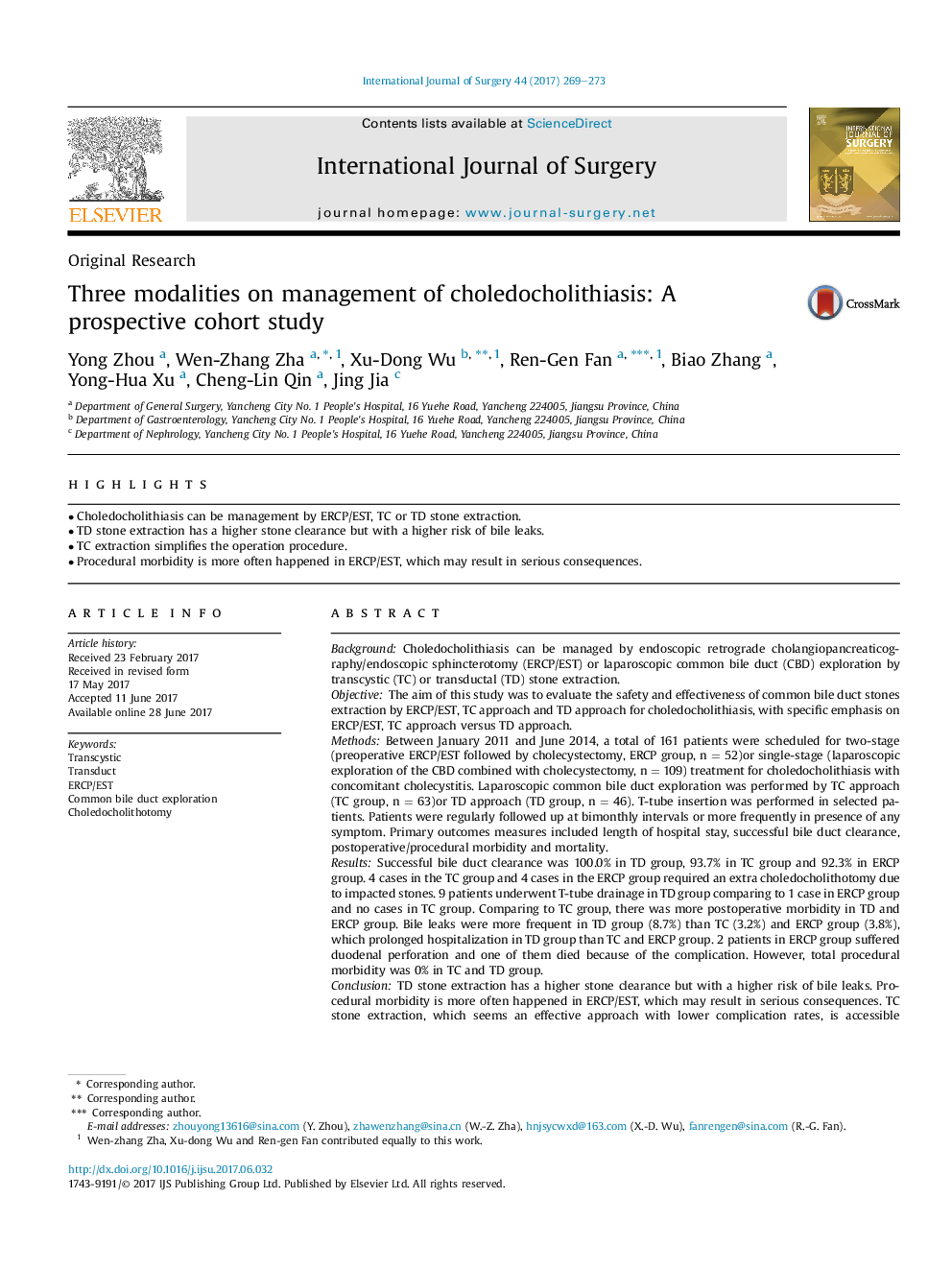| Article ID | Journal | Published Year | Pages | File Type |
|---|---|---|---|---|
| 5731680 | International Journal of Surgery | 2017 | 5 Pages |
â¢Choledocholithiasis can be management by ERCP/EST, TC or TD stone extraction.â¢TD stone extraction has a higher stone clearance but with a higher risk of bile leaks.â¢TC extraction simplifies the operation procedure.â¢Procedural morbidity is more often happened in ERCP/EST, which may result in serious consequences.
BackgroundCholedocholithiasis can be managed by endoscopic retrograde cholangiopancreaticography/endoscopic sphincterotomy (ERCP/EST) or laparoscopic common bile duct (CBD) exploration by transcystic (TC) or transductal (TD) stone extraction.ObjectiveThe aim of this study was to evaluate the safety and effectiveness of common bile duct stones extraction by ERCP/EST, TC approach and TD approach for choledocholithiasis, with specific emphasis on ERCP/EST, TC approach versus TD approach.MethodsBetween January 2011 and June 2014, a total of 161 patients were scheduled for two-stage (preoperative ERCP/EST followed by cholecystectomy, ERCP group, n = 52)or single-stage (laparoscopic exploration of the CBD combined with cholecystectomy, n = 109) treatment for choledocholithiasis with concomitant cholecystitis. Laparoscopic common bile duct exploration was performed by TC approach (TC group, n = 63)or TD approach (TD group, n = 46). T-tube insertion was performed in selected patients. Patients were regularly followed up at bimonthly intervals or more frequently in presence of any symptom. Primary outcomes measures included length of hospital stay, successful bile duct clearance, postoperative/procedural morbidity and mortality.ResultsSuccessful bile duct clearance was 100.0% in TD group, 93.7% in TC group and 92.3% in ERCP group. 4 cases in the TC group and 4 cases in the ERCP group required an extra choledocholithotomy due to impacted stones. 9 patients underwent T-tube drainage in TD group comparing to 1 case in ERCP group and no cases in TC group. Comparing to TC group, there was more postoperative morbidity in TD and ERCP group. Bile leaks were more frequent in TD group (8.7%) than TC (3.2%) and ERCP group (3.8%), which prolonged hospitalization in TD group than TC and ERCP group. 2 patients in ERCP group suffered duodenal perforation and one of them died because of the complication. However, total procedural morbidity was 0% in TC and TD group.ConclusionTD stone extraction has a higher stone clearance but with a higher risk of bile leaks. Procedural morbidity is more often happened in ERCP/EST, which may result in serious consequences. TC stone extraction, which seems an effective approach with lower complication rates, is accessible techniques simplifying the operation procedure by avoiding choledocholithotomy and subsequent T-tube insertion.
